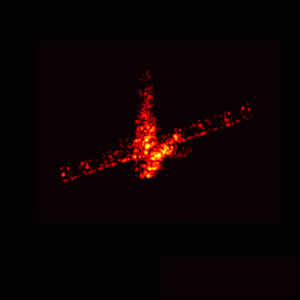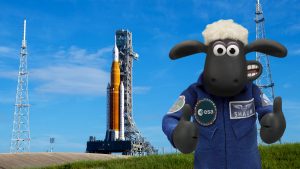Solar Orbiter and Parker Solar Probe Team Up To Finally Solve Sun’s Heating Mystery [UPDATED]
21st Sep 2023![Solar Orbiter and Parker Solar Probe Team Up To Finally Solve Sun’s Heating Mystery [UPDATED] Solar Orbiter and Parker Solar Probe Team Up To Finally Solve Sun’s Heating Mystery [UPDATED]](https://orbitaltoday.com/wp-content/uploads/2021/03/Airbus-Solar-Orbiter-1.jpg)
For over sixty years, scientists have tried to answer the question: Why is the Sun’s atmosphere, the corona, hotter than its surface? This paradox challenges conventional wisdom, as things usually cool down with distance from a heat source.
The corona, a searing plasma, blazes at over 1.8 million degrees Fahrenheit, while the solar surface hovers at a mere 10 864 degrees Fahrenheit.
So why is it so? That’s what ESA and NASA scientists try to figure out with the help of the Solar Orbiter and Parker Solar Probe missions.
Brand-New Solar Project: ESA & NASA Team Up to Solve a Solar Mystery
Well, new approaches have been used. Researchers suspect turbulence in the solar atmosphere heats the corona. Investigating this theory required a dual approach: remote sensing and in-situ measurements, a task too complex for one spacecraft.
Enter the European Space Agency’s Solar Orbiter and NASA’s Parker Solar Probe. The Solar Orbiter remotely sensed while staying at a safe distance, while the Parker Solar Probe ventured closer to gather in-situ data.
The Missing Piece
Aligning the two spacecraft, ESA-led Solar Orbiter and NASA’s Parker Solar Probe, was the missing link. In June 2022, researcher Daniele Telloni calculated an alignment opportunity just shy of a 45-degree roll. This alignment allowed simultaneous measurements of the corona’s configuration and plasma properties. The results support the theory that turbulence transfers energy, similar to stirring coffee. Magnetised fluid in the corona amplifies this process, heating individual particles.
What Is ESA’s Solar Orbiter?
Solar Orbiter is a joint project by ESA and NASA, which started in February 2020. Its purpose is to study the processes on and around the Sun at the maximum possible distance. The plan is to set up observations about 42 million kilometres away from the Sun, which is closer than where Mercury is located.
The project entails deploying a Solar Orbiter spacecraft into orbit for a seven-year mission. It’s dedicated to observing solar wind events, its underlying causes, and its dynamic behaviour. In addition, the mission plans to study the star’s magnetic field, collect data about it and transmit it to Earth.
The Solar Orbiter spacecraft and its 10 components must withstand temperatures of 500 degrees Celsius during the mission. Airbus has created a powerful heat shield with openings for five telescopes to observe the Sun. The instruments underwent a variety of tests to ensure they do not interfere with image transmission, gas venting into space, and equipment overheating.
Role Of Elecnor Deimos In The Solar Orbiter Project
Elecnor Deimos, a Spanish aerospace and defence company, has been actively engaged in the mission since the assessment phase, when they conducted trajectory calculations for resonant orbits and low-thrust manoeuvres. The company has made a significant contribution to the strategy for the development and testing of flight systems. Complicated tests were carried out on stands using simulators and real aircraft.
These factors have all been successfully tested:
- all onboard instruments
- flight control systems and avionics
- onboard software
- operation of control centre consistency
During testing, Elecnor Deimos engineers constantly analysed the processes and made reports on each step in order to prepare for the launch of the mission as efficiently as possible and eliminate any possible failures and malfunctions in the systems.
Benefits Of The Solar Orbiter Mission
The Solar Orbiter mission is designed to protect the planet and thereby improve the living conditions of humanity. Solar flares and coronal mass ejections negatively affect telecommunications, computers, navigation systems, power grids and the health of living organisms. Receiving data about the processes occurring on the Sun and in its vicinity in a timely manner enables space-borne and terrestrial operators to implement protective measures, minimise negative consequences, or even prevent them, and this is precisely the goal of the Solar Orbiter mission.
What’s NASA’s Parker Solar Probe?
NASA’s Parker Solar Probe is a groundbreaking mission launched in 2018 to explore the sun’s outermost atmosphere, known as the corona. Named after astrophysicist Eugene Parker, it aims to unravel the mysteries of the corona, including why it’s significantly hotter than the Sun’s surface and what drives the solar wind that affects Earth and our solar system.
The probe is equipped with state-of-the-art scientific instruments to measure the environment around the spacecraft, collecting data on particles, magnetic fields, and plasma waves. It’s designed to withstand extreme heat and radiation, coming within 3.83 million miles of the Sun’s surface at its closest approach – closer than any spacecraft before it. This pioneering mission is set to greatly advance our understanding of the sun and its impact on our planet.
India’s Solar Aditya-L1 Mission
While NASA and ESA are working together to answer the Sun’s heating riddle, India has also a say in the space race by launching the first space-based Indian mission to study the Sun. Aditya-L1 mission is India’s solar mission where the spacecraft will be placed in a halo orbit around the Lagrange point 1 (L1) of the Sun-Earth system. The total cost of this mission is estimated to be around Rs 400 crore.
Placing the satellite in a halo orbit around L1 of the Sun-Earth system, which is about 1.5 million km from the Earth, enables continuous viewing of the Sun without any eclipses or obstructions. Recently, the Indian mission has begun collecting data after performing its fourth Earth-bound manoeuvre successfully.



![SpaceX Starship Explodes 4 Minutes After Launch [Updated] SpaceX Starship Explodes 4 Minutes After Launch [Updated]](https://orbitaltoday.com/wp-content/uploads/2023/04/starship-launch-300x169.png)


Thank you for your comment! It will be visible on the site after moderation.